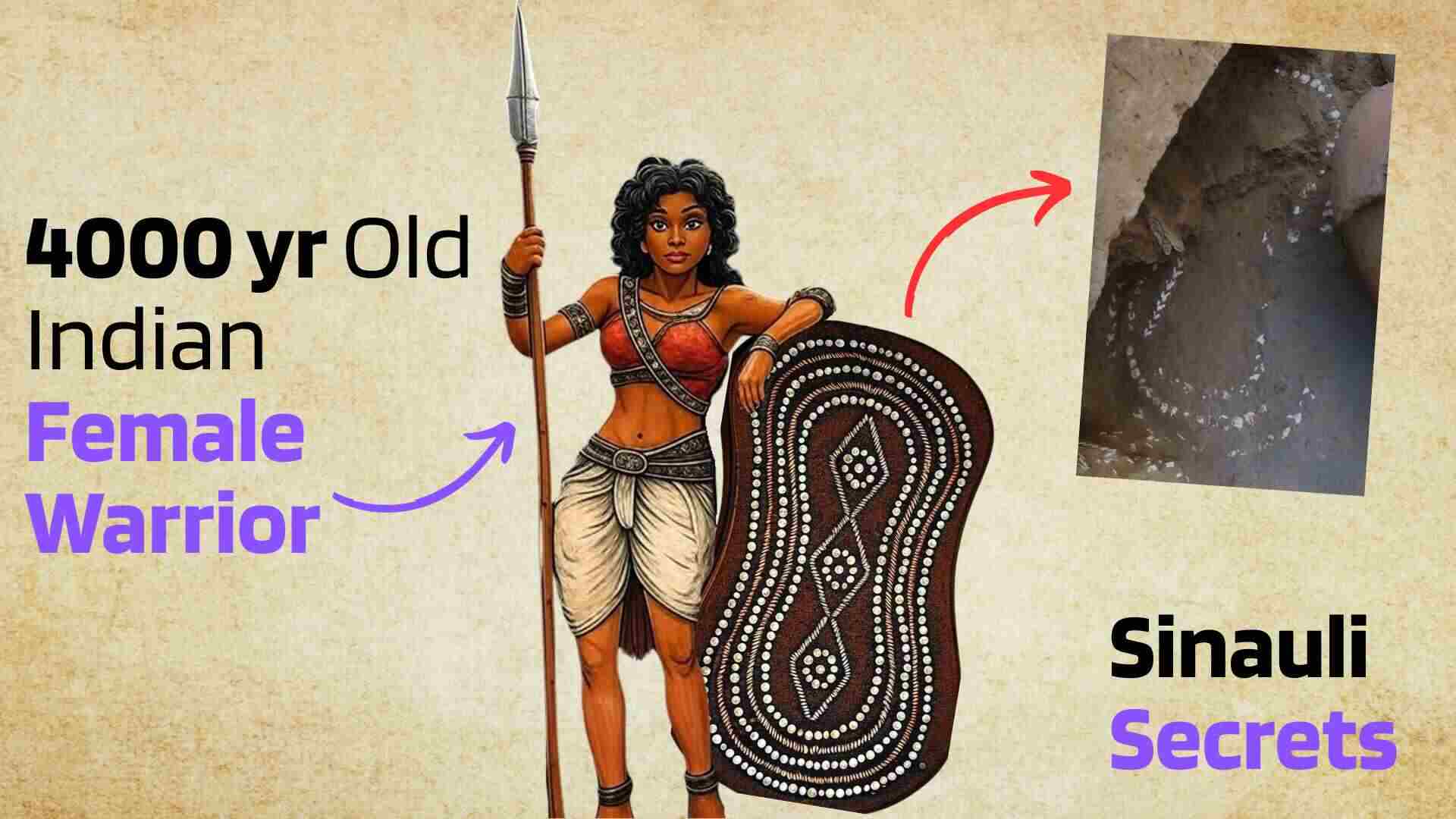The 4,000-year-old burial site at Sinauli, Uttar Pradesh, has unveiled groundbreaking evidence of female warriors in Bronze Age India. Discovered accidentally in 2005 and excavated by the Archaeological Survey of India (ASI), the site challenges traditional narratives of ancient gender roles. Over 116 burials, including those of women buried with weaponry, shields, and chariots, reveal a society where women held martial prominence. These findings, dated to 1865–1507 BCE, belong to the Ochre-Coloured Pottery (OCP) culture and redefine our understanding of warfare, social hierarchy, and gender equality in ancient India.

The Discovery and Significance of Sinauli
Located near the Yamuna River, Sinauli gained attention when farmers uncovered human skeletons and pottery. Systematic excavations led by Dr. Sanjay Kumar Manjul revealed Asia’s largest burial site, featuring wooden chariots with copper reinforcements, antenna swords, and intricately decorated shields. Radiocarbon dating places the site in the Late Harappan period, contemporary with Mesopotamian and Greek civilizations. The presence of three chariots—buried alongside warriors—indicates advanced craftsmanship and a culture valuing military prowess.

Evidence of Women in Warfare
The most striking discovery was the burial of a woman in a wooden coffin, accompanied by a bow, arrows, and a symbolic antenna sword. Her armlet of agate beads and the absence of ceremonial objects suggest these were functional weapons. Another female skeleton was found with a miniature copper dagger, reinforcing the idea of a warrior class inclusive of women.
Shields discovered at the site further highlight gender distinctions without hierarchy: men’s shields bore copper decorations, while women’s featured white steatite. These artifacts, buried alongside their owners, confirm that women actively participated in combat. The upright placement of swords in graves, a ritual reserved for warriors, underscores their honored status.
The discoveries are associated with the Ochre Coloured Pottery (OCP) culture, which is contemporaneous with the Late Harappan civilization. This period predates the traditionally proposed arrival of the Aryans in India, which is often placed around 1500 BCE. The presence of advanced weaponry, chariots, and evidence of female warriors at Sinauli suggests that these cultural and technological developments were indigenous and not introduced by later migrations. Thus, the female warriors of Sinauli belong to a pre-Aryan or at least pre-mainstream Aryan arrival context, challenging older theories that associated such advancements solely with Aryan influence.
Cultural Legacy and Technological Mastery
Sinauli’s society appears remarkably progressive. Women warriors received burials comparable to men, with similar grave goods like chariots, helmets, and pottery. This parity suggests military achievement, not gender, dictated social standing. The coexistence of primary burials (full skeletons), symbolic burials (artifacts alone), and extended burials implies institutionalized roles for women in warfare, likely trained from youth given the tailored weapon sizes.
The elaborate coffins—adorned with floral motifs and anthropomorphic figures—reflect high status. A coffin lid depicting a figure with bull horns and pipal leaves hints at spiritual ties to warfare. Sinauli’s chariots, crafted with copper-clad wooden wheels and fixed axles, predate and surpass contemporary designs from Mesopotamia. Their sophistication challenges theories of foreign technological influence, pointing to indigenous innovation. The OCP culture’s metallurgical skills, evident in durable swords and shields, suggest a society prioritizing military advancement.
The inclusion of women in warfare likely offered strategic advantages, maximizing human resources. Weapons buried with women, such as bows and close-combat swords, indicate specialized roles. This structured military system, combined with ritualistic burials, reflects a culture where martyrdom was revered regardless of gender.

